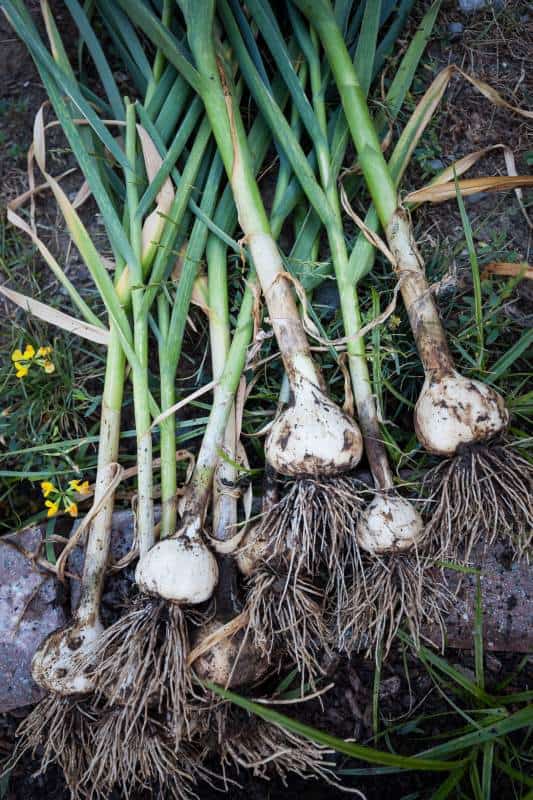
Making a difference in the world through food. It’s not just a lofty goal; it’s a driving passion for the students in the Applied Food Studies program. And the lessons they’re learning in its Teaching Garden are preparing them to do that all-important work.
“I’m planning to go into humanitarian work, the Peace Corps to start, and eventually go into government work in Washington to work on food access problems,” says AFS student Meagan Curtis.
It’s all connected
Students like Meagan, who want an in-depth understanding of the interconnectedness of global food resources, policy, and culture, are drawn to this exciting bachelor’s degree program.
“We’re looking at colony collapse disorder, the anthropology of food, gender equality, and policymaking,” says aspiring food writer Aaron Boisvert. “I’ve been interested in these topics since I started here.”
And the Teaching Garden at the CIA’s New York campus helps bring these topics to life. “The AFS program helps students think broadly and deeply about food issues and their social and political implications,” says Dr. Denise Bauer, dean of liberal arts and food studies. “We’re talking about climate change, agriculture, and sustainability, and the garden helps them understand the whole food system in real and tangible ways.”

How can growing tomatoes, figs, and garlic accomplish all this? Read on.
One amazing outdoor classroom
Located across from the Student Commons, the Teaching Garden’s design is the happy result of a student competition held between three teams in the Project in Applied Food Studies course, with the best of each team’s ideas making up the final design.

“The garden was conceived as an outdoor classroom open to all, with an inclusive spirit of collaboration,” Dr. Bauer says. “It is a living space, and it keeps evolving and changing as we learn. Unintended outcomes, like the crazy April snowstorm we had this year, trigger problem solving the students have to do. And that applied aspect of learning is what we really value and are excited about.”
So let’s take a tour
On a bright July morning, associate professor Dr. Maureen Costura walks the garden pointing out a few highlights while her students pull weeds and harvest garlic and chamomile.

“Lining the outside of the fence are herbs and what are called insectaries. The beneficial insects they attract control pests—usually by eating them! We’re also using invasive plants like mint to control weeds in areas we don’t access much, like under bushes. Working with nature, we’re building a balanced ecosystem.
When you first walk in the gate, you’ll see plants being grown by students in the Ecology of Food course. Each student is assigned to one type of plant—say, beets—and then learns everything there is to know about it.
We’re letting some plants go to seed and starting a seed library. This not only saves money but when something grows successfully for a season in your area, its offspring are acclimated and more likely to be successful.

In the center of the garden is our outdoor classroom, which students built themselves. The wooden benches surround an herb spiral, which demonstrates how you can use both vertical and horizontal space for planting in a small area.
Parts of the garden are being used for research experiments; for example, one student is testing to see which substance is best for weed resistance—cardboard, torn-up blue jeans, or newspaper.

The area I’m most proud of is the Native American section, which I’m using in my Ancient Foods of Latin America class. We’re growing amaranth, which was sacred to the Aztecs, and when we harvest its grain, we will make alegria, the ‘food of joy.’ We’re also growing yacón, and we have the Three Sisters garden with corn, beans, and squash. The three plants grow better when they’re planted together—the giant squash’s big leaves keep moisture in and act as mulch, the beans add nitrogen back into the soil, and the corn provides a trellis for the beans to climb.
AFS alumni: where are they now?
CIA Applied Food Studies graduates are working just about everywhere, including for the FoodCorps, in farm-to-table restaurants, for non-profits in food education and food policy, and for themselves, in their own businesses. “Some AFS graduates are taking a traditional path, but with a different bent,” says Dr. Bauer. “For example, working front of the house at a farm-to-table restaurant like Primo and Blue Hill at Stone Barns, where they have the real ability to explain to customers about the sustainability of the menu.”

AFS student Natasha White is following that very path. “I’m planning to go into the front of the house and wine and beverage service,” she says. “The way Applied Food Studies ties in is that I’m looking at companies with ethical practices.”
Classmate Gabriella St. George adds, “I plan to get my master’s in nutrition science and dietetics. I want to teach people how to apply food as medicine, using Eastern medicine traditions. I want to write and educate.”
It’s future CIA bachelor’s graduates like these who will make all the difference.
Get the CIA’s guide to Changing the World Through Food!

